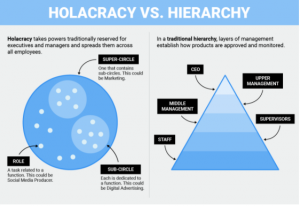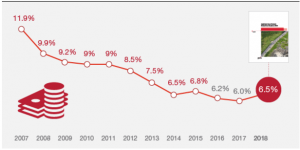Data based decision making and predictive analytics are buzz words you are hearing a lot about these days. However, they are emerging from the dark corners of the developer’s worlds and into the light of mainstream business operations. I was speaking at an Analyst update earlier this week and the question came up “which companies do you follow that are using predictive analytics in Human Resources?” A great question, but the answer was, unfortunately, no one. Although it may be some time before this data based approach becomes mainstream in the world of Human Resources, there are a plethora of reasons it should.
Let’s start with a definition of predictive analytics. It is basically just a script or a technology that learns from current data and then uses that current data to “predict” or forecast upcoming data or behavior. Think about how your credit score works. The rating agencies use data, your past history of paying on time, as well as other data points, to “predict” your ability and willingness to pay on time for a new loan.
HR has massive set of data on its employees. By applying predictive analysis to these data sets, HR moves toward becoming more of a strategic partner at the table. Decisions become fact and data based instead of depending on someone gut feelings or instincts. Predictive analytics allows HR to forecast the impact that different policies will have on their workforce and to get ahead of the curve on turnover, candidate success models and employee engagement.
From Deloitte’s 2017 Global Human Capital Trends Survey. While 71 percent of companies see people analytics as a high priority in their organizations (31 percent rate it very important), progress has been slow. The percentage of companies correlating HR data to business outcomes, performing predictive analytics, and deploying enterprise scorecards barely changed from last year.
Analytics is being applied to a wide range of business challenges: Recruiting remains the No. 1 area of focus, followed by performance measurement, compensation, workforce planning, and retention. We see an explosive growth in the use of organizational network analysis (ONA) and the use of “interaction analytics” (studying employee behavior) to better understand opportunities for business improvement.
Staffing and on-boarding tends to be an area that we think of first when it comes to utilizing Predictive Analytics. We all want to be able to predict the success of the candidate in the role. Progressive HR organizations are using interview data, careful parsing of job posting language, and candidate screening data to do just that. New tools that look at social and local hiring data can even help companies identify people who are “likely to look for new jobs” much before they are even approached by competitors.
Turnover is another area that could greatly benefit from this approach. Capturing and reporting on it is nice, but what about getting ahead of it? What about using data to be able to predict who is likely to submit their resignation within the next 3 months and conducting extensive stay interviews with those employees? Or being able to offer them an Individualized Development Plan to solidify their engagement?
There are a multitude of opportunities to utilize Predictive Analytics to help us make better decisions across the board in each of our organizations.











